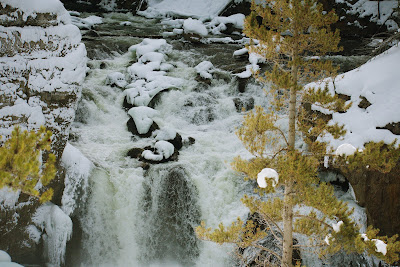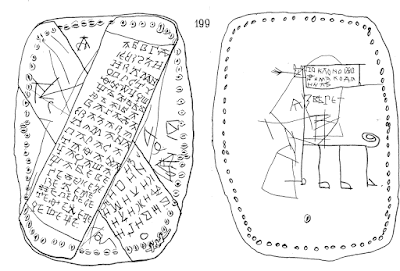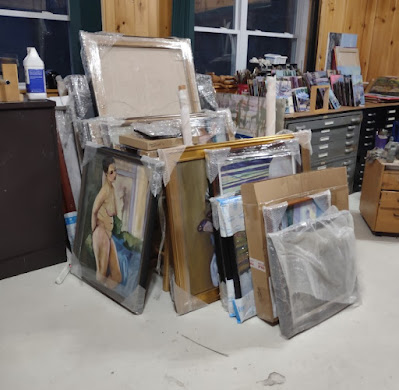Mastery is a moving target. Occasional moments of greatness are a byproduct of that continuing struggle.
 |
| Autumn farm, evening blues, oil on archival canvasboard, Carol L. Douglas |
“How @#$% long does it take great painters to learn to paint?” asked a student recently, with only the slightest hint of frustration in his voice. “I’m not looking for affirmations,” he added. “I really would like some perspective.”
In the age of apprenticeships and less-flexible standards of art, that was an easier question to answer. Titian started his apprenticeship somewhere around age 10-12, and finished it around ten years later. Diego Velázquez did a six-year apprenticeship starting at around age ten. Peter Paul Rubensdid a 7-year apprenticeship starting at age 14. The British portrait painter George Romneydid only four years, but he started at age 21, with watchmaking and drawing experience under his belt. Most women at this time studied with family members.
 |
| Vineyard, oil on canvas, 30X40, Carol L. Douglas |
These budding artists made learning their craft a full-time occupation during their apprenticeships. They were also responsible for elements of painting we don’t bother with today, such as preparing panels and grinding pigments, along with the scut-work of any successful business. In addition, their master (or more probably, his wife) taught them the necessary skills for living.
By the end of the 18th century, the apprenticeship system was dead. Painters were more likely to come up through atelier training. Many artists of this period, including Édouard Manet and Vincent van Gogh, came from affluent families. They had the liberty to direct their own destinies and well-heeled friends to buy their first paintings.
Mary Cassatt is typical in that she had a good liberal education (including exposure to great art in Europe) before enrolling at the Pennsylvania Academy of the Fine Arts at the age of 15. She spent four years there. It was not coincidence that atelier training took about as long as a humanities degree; artists had transitioned from being craftsmen to intellectuals.
 |
|
Midsummer, 24X36, oil on canvas (plein air), $3188 unframed, Carol L. Douglas |
By the 20th century, the down-and-dirty craftsmen in the art world were illustrators. Norman Rockwell also spent four years studying art, but he didn’t have the advantage of a Grand Tour. He started art school at age 14 and was working for Boy’s Life at 18.
The 20th century was a confused time for art education in the western world. Grant Wood is representative of mid-century painters in that he moved around through various schools and collectives learning his craft. Andy Warhol, on the other hand, had a BFA from Carnegie-Mellon. Those who came up outside the formal art world, like Jasper Johns, still put in a lot of years perfecting their craft.
There have always been outliers. N.C Wyeth had a fairly typical art education for his time, with Howard Pyle and others. However, when it came to the next generations, Andrew Wyeth and grandson Jamie Wyethwere both tutored at home. This hearkens back to historic family painting dynasties like the Brueghelsor Gentileschis.
 |
| Termination Dust, oil on archival canvasboard, Carol L. Douglas |
We love stories of instant success, but most, like Grandma Moses, were working hard at art for decades before their discovery. Moses spent a lifetime doing fine needlework until her arthritis forced her to take up a brush at age 78.
My student’s question presumes there’s a point at which the painter says, ‘whew, I’ve made it!” Every credible painter I know is simply striving to be good at what he or she does, but the goal keeps moving. Greatness is merely a by-product of that continuing struggle.
Historically, masterpiece had a specific meaning. It was a work produced to earn membership in one’s guild. Velazquez’ first Waterseller of Seville was such a painting, done to prove that he was good enough to hang out his own shingle. It was the start of his professional life, not its culmination.









































